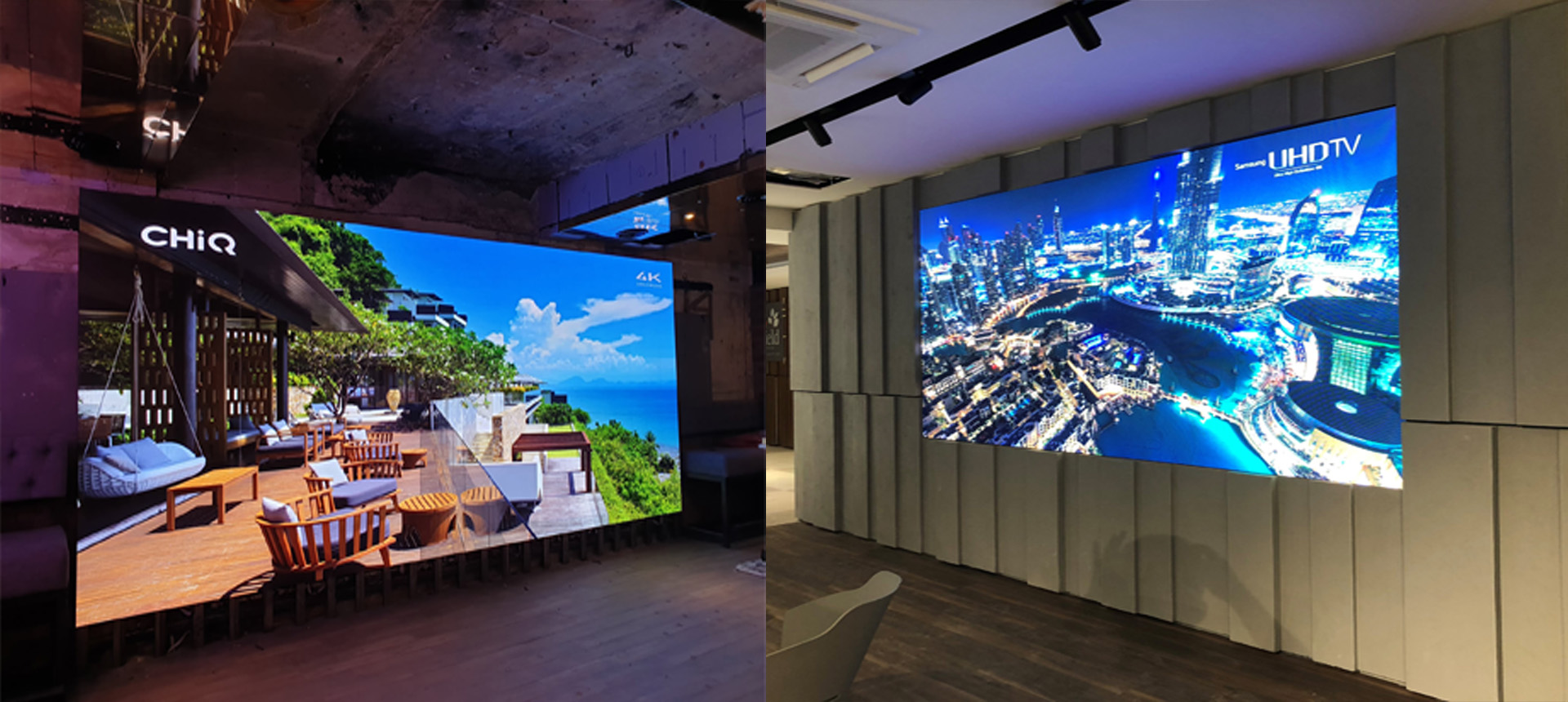
Introduction
In the kaleidoscope of our technology-infused world, LED screens have become more than just visual displays – they are portals to information, entertainment, and communication. Whether gracing the cozy confines of our living rooms or commanding attention in expansive office spaces, the choice of the right LED screen size emerges as a crucial determinant of the overall viewing experience. This article aims to unravel the intricate considerations and guidelines that shape the art of selecting the perfect LED screen dimensions.
Factors to Consider When Choosing LED Screen Dimensions
Viewing Distance: Imagine watching a cinematic masterpiece on a screen too small for the distance – an underwhelming experience at best. The first consideration in choosing the appropriate LED screen size revolves around viewing distance. For comfortable and immersive viewing, the size should align with the distance from the screen.
Resolution: The clarity and sharpness of images are inextricably tied to resolution. A higher resolution ensures that each pixel contributes to a clearer image, especially crucial when the screen is viewed up close. The interplay of pixels determines not just the size but the visual finesse of the LED screen.
Content Type: LED screens are versatile canvases that showcase diverse content – from text to intricate images and videos. The nature of the content you intend to display impacts the ideal screen size. A smaller screen may suffice for text-centric displays, while detailed images and videos benefit from a larger canvas.
Available Space: Practicality meets aesthetics when considering the physical space where the LED screen will reside. Measuring the available space ensures that the chosen screen size seamlessly integrates without overwhelming or crowding the surroundings.
General Guidelines for LED Screen Size Selection
Small Rooms (Under 100 Square Feet): In more intimate spaces, such as bedrooms or compact offices, a 24-inch to 32-inch LED screen strikes the perfect balance, offering visibility without overpowering the limited space.
Medium-Sized Rooms (100-200 Square Feet): Transitioning to medium-sized rooms, consider a 32-inch to 40-inch LED screen. This range provides an optimal balance, offering a larger display without dominating the room.
Large Rooms (Over 200 Square Feet): In expansive living rooms or conference spaces, the visual impact amplifies with a 50-inch or larger LED screen. This ensures not only visibility but also a captivating visual experience for everyone in the room.
Additional Considerations
Eye Strain: Beyond the visual spectacle, the health of our eyes is paramount. Prolonged exposure to screens from too close a distance can lead to eye strain. Ensuring the screen is positioned at a comfortable viewing distance is crucial for sustained enjoyment.
Viewing Angle: LED screens, renowned for their wide viewing angles, cater to diverse seating arrangements. Consider the required viewing angles based on the specific application – whether it’s a family movie night or a professional presentation.
Ambience: The interplay of light and screen brightness is an often-overlooked aspect. In well-lit environments, a brighter LED screen preserves image clarity, while in dimly lit spaces, a dimmer screen prevents eye fatigue, creating a balanced ambience.
Conclusion
In the symphony of technological marvels, selecting the right LED screen size is akin to tuning an instrument – it requires precision, consideration, and an understanding of the harmonious interplay between technology and human experience. By delving into factors like viewing distance, resolution, content type, and available space, you embark on a journey to curate an immersive visual experience. Remember, the ideal LED screen size is not merely a display; it’s a tailored gateway to a world of captivating visuals, seamlessly blending technology with the nuances of your unique viewing environment.
